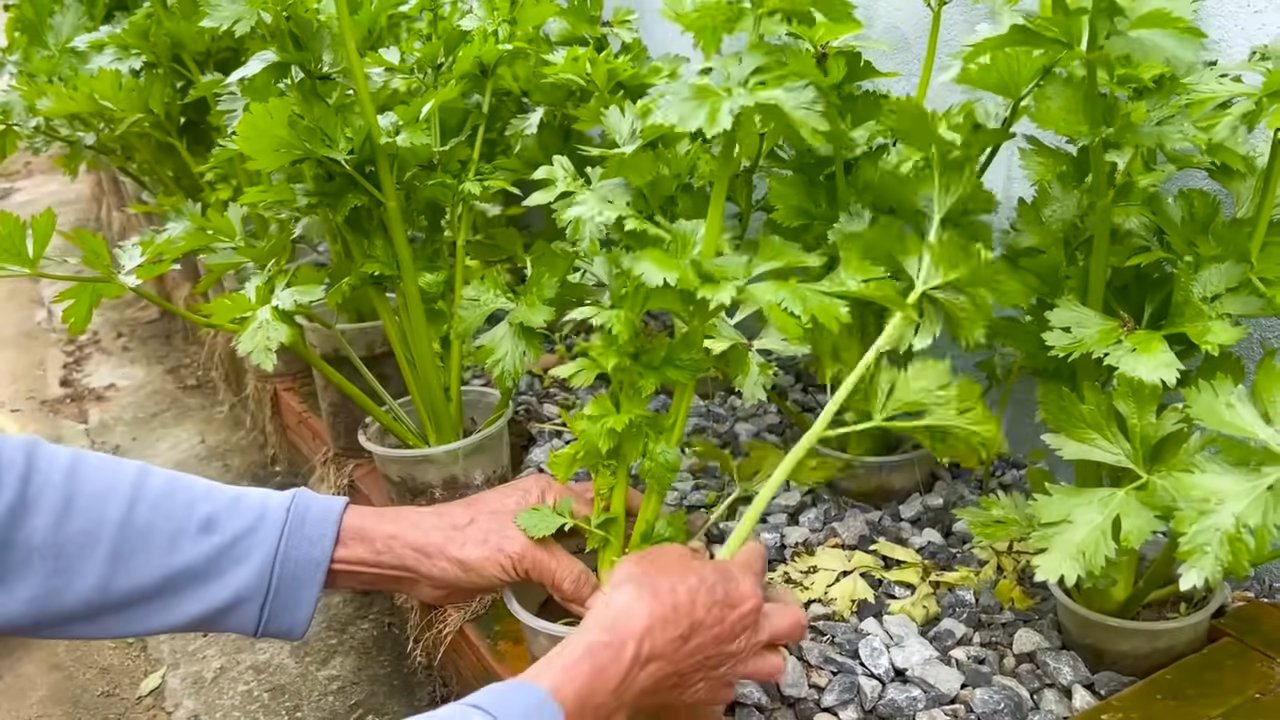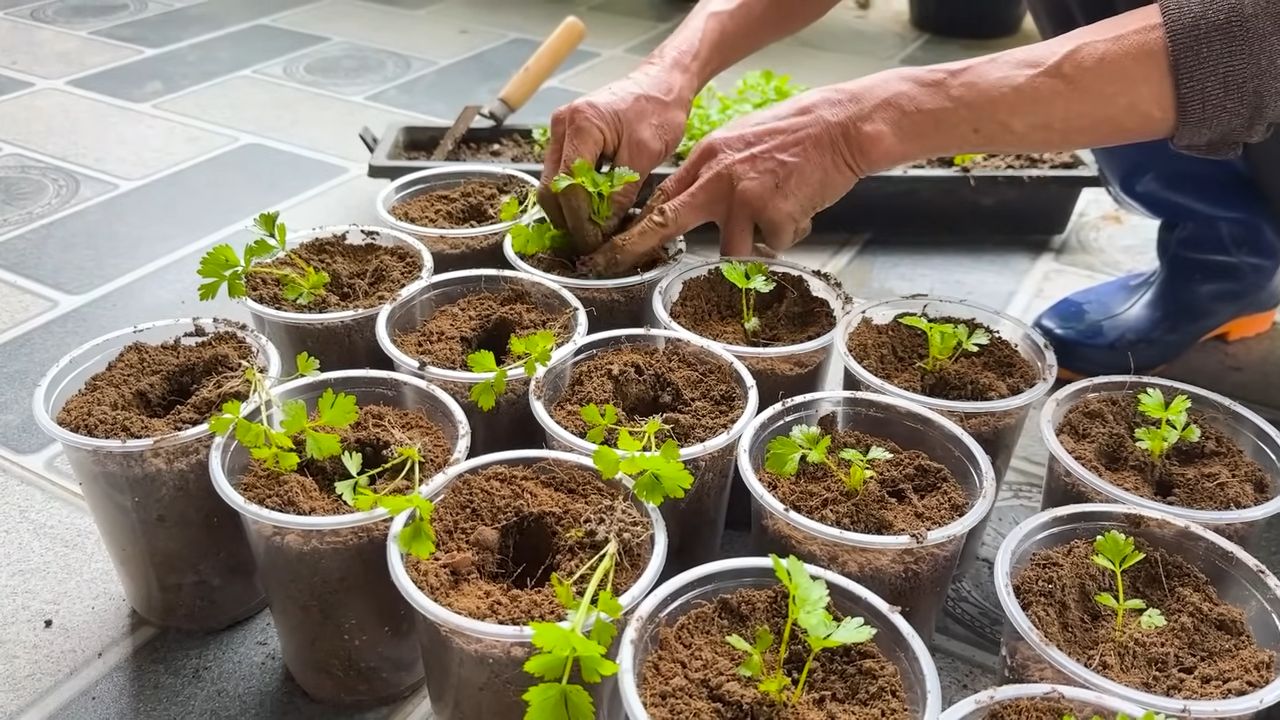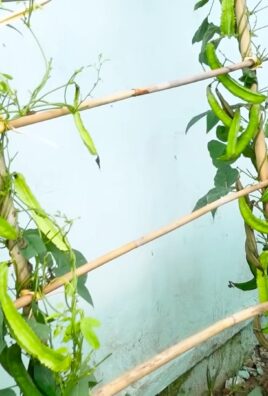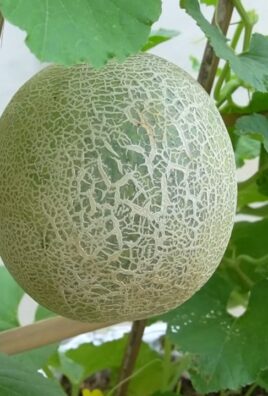Growing celery hydroponically might sound like something out of a futuristic farm, but trust me, it’s surprisingly simple and incredibly rewarding! Have you ever dreamt of snipping fresh, crisp celery stalks right from your kitchen, even in the dead of winter? Well, dream no more! This DIY guide will unlock the secrets to cultivating this crunchy veggie without soil, bringing a touch of green innovation to your home.
Hydroponics, the art of growing plants without soil, has ancient roots, dating back to the Hanging Gardens of Babylon and the floating gardens of the Aztecs. While those systems were impressive feats of engineering, our approach is far more accessible. We’re talking about a fun, weekend project that can transform your relationship with fresh produce.
Why should you try growing celery hydroponically? Because it’s a game-changer! Forget battling soil pests, weeds, and unpredictable weather. Hydroponics offers a controlled environment, leading to faster growth, higher yields, and the purest celery you’ve ever tasted. Plus, it’s a fantastic way to reduce your environmental footprint and impress your friends with your green thumb (or should I say, green water thumb?). Let’s dive in and discover how to make this happen!

Growing Celery Hydroponically: Your DIY Guide for Crisp Stalks
Hey plant friends! Have you ever wondered if you can grow celery without soil? The answer is a resounding YES! Hydroponics, the practice of growing plants in water with nutrients, is a super exciting and space-saving method to grow fresh celery right in your home. I’ll show you how you can easily do it yourself. Don’t worry, it’s easier than you think!
What you need for your hydroponic celery project:
- Celery stalk: Preferably a fresh, store-bought celery stalk with an intact root base.
- Container: A vessel large enough to hold the celery stalk and sufficient water. A bowl, a bucket, or even a large mason jar will work perfectly.
- Water: Tap water is fine, but filtered water or rainwater is even better.
- Hydroponic nutrient solution: A nutrient solution specifically developed for leafy greens. Available at garden centers or online.
- Growing medium (optional): Expanded clay pellets, coconut coir, or rockwool can help stabilize the stalk and promote root formation.
- Sunny location: Celery loves light! A windowsill or a spot under a grow light is ideal.
- Patience: Celery takes a little time to grow. But the wait is worth it!
Step-by-Step Guide: Regenerating Celery from the Stalk
1. Preparing the Celery Stalk:
- Cut off the bottom part of the celery stalk, about 5-7 cm (2-3 inches) from the root base. Make sure the root base remains intact.
- Remove the outer, wilted, or damaged stalks. The inner, fresh stalks should be kept.
- Gently clean the stalk under running water to remove any soil or dirt.
2. Soaking the Stalk:
- Fill your container with water. The water should cover the stalk about halfway.
- Place the celery stalk in the water with the root base facing down.
- Place the container in a sunny location.
3. Changing Water and Observing:
- Change the water every 1-2 days to prevent algae growth and ensure the stalk gets fresh water.
- Observe the stalk carefully. After a few days, you should see new roots sprouting from the base and new leaves growing in the center of the stalk.
4. Transplanting into a Hydroponic System (optional, but recommended):
- Once the roots are about 2-3 cm (1 inch) long, you can transplant the stalk into a hydroponic system. While this is optional, it promotes growth and nutrient uptake.
- Choose a container that is large enough to hold the stalk and the growing medium.
- Fill the container with your chosen growing medium (expanded clay pellets, coconut coir, or rockwool).
- Carefully place the celery stalk into the growing medium so that the roots are covered.
- Fill the container with the hydroponic nutrient solution. Be sure to follow the instructions on the nutrient solution package carefully.
5. Care and Growth:
- Place the container in a sunny spot or under a grow light.
- Regularly check the water level and top up with nutrient solution as needed.
- Change the nutrient solution every 1-2 weeks to ensure the celery receives enough nutrients.
- Regularly remove any wilted or damaged leaves.
Optimizing Your Hydroponic System for Celery
To maximize the growth of your hydroponic celery, there are a few extra tips and tricks I’d like to share.
1. The Right Nutrient Solution:
- Celery is a heavy feeder, meaning it requires a lot of nutrients to grow optimally. Make sure to use a nutrient solution specifically designed for leafy greens that contains all the essential nutrients in the right concentration.
- Pay attention to the pH of the nutrient solution. The ideal pH for celery is between 6.0 and 6.5. You can check the pH with a pH meter or pH test strips and adjust it with pH-Up or pH-Down solutions if necessary.
2. Aeration:
- The roots of the celery need oxygen to stay healthy and absorb nutrients. Good aeration is therefore crucial for the success of your hydroponic project.
- You can improve aeration by adding an air pump with an air stone to the container. The air stone creates small bubbles that enrich the water with oxygen.
3. Lighting:
- Celery needs a lot of light to grow. If you don’t have a sunny location, you should use a grow light.
- LED grow lights are a good choice as they are energy-efficient and emit a broad light spectrum that is optimal for plant growth.
4. Pest Control:
- Pests can also occur in a hydroponic system. Watch for signs of pest infestation, such as aphids, spider mites, or whiteflies.
- In case of an infestation, you can use organic pesticides, such as neem oil or beneficial insects.
Harvesting and Enjoying Your Homegrown Celery
After a few weeks, you should have a beautiful, bushy celery plant. Now it’s time to harvest!
1. Harvest Time:
- You can harvest the celery as soon as the stalks have reached the desired size. It usually takes about 2-3 months for the celery to be ready for harvest.
- You can either harvest the whole plant or just cut individual stalks. If you only cut individual stalks, the plant can continue to grow, and you can harvest over a longer period.
2. Harvesting Method:
- Cut the stalks at the base with a sharp knife or scissors.
- Wash the stalks thoroughly under running water.
3. Enjoyment:
- Your homegrown celery is now ready to be enjoyed! You can use it raw in salads, as a dipping vegetable, or in smoothies.
- Celery is also a great ingredient for soups, stews, and other warm dishes.
Common Mistakes and How to Avoid Them
Mistakes can happen even when growing celery hydroponically. Here are some common mistakes and how to avoid them:
1. Wrong Nutrient Solution:
- Always use a nutrient solution specifically designed for leafy greens. The wrong nutrient solution can lead to nutrient deficiencies and growth problems.
2. Overwatering:
- Make sure that the celery roots are not constantly submerged in water. Overwatering can lead to root rot.
3. Too Little Light:
Celery needs a lot of light to grow. If you don’t have a sunny location, you should use a grow light.

Conclusion
So, there you have it! Growing celery hydroponically isn’t just a futuristic fantasy; it’s a surprisingly accessible and rewarding project that can bring fresh, crisp celery right to your kitchen, regardless of your outdoor space. We’ve walked through the steps, highlighted the benefits, and addressed potential challenges. But why is this DIY trick a must-try?
First and foremost, the taste. Hydroponically grown celery boasts a flavor that’s noticeably cleaner and more intense than its store-bought counterpart. Imagine the difference in your salads, soups, and snacks! You’ll be amazed at the vibrant, refreshing taste that comes from celery nurtured in a controlled, nutrient-rich environment.
Beyond the taste, consider the convenience. No more last-minute trips to the grocery store when you need celery for a recipe. With your own hydroponic setup, you’ll have a constant supply of fresh celery at your fingertips. This is especially beneficial for those who use celery frequently in their cooking or enjoy it as a healthy snack.
Furthermore, growing celery hydroponically is an incredibly educational and engaging experience. It’s a fantastic way to learn about plant science, nutrient solutions, and the intricacies of hydroponic systems. It’s also a great project to involve children in, fostering their curiosity about where their food comes from and promoting healthy eating habits.
But the benefits don’t stop there. Hydroponics is a water-efficient method of growing plants, using significantly less water than traditional soil-based gardening. This makes it an environmentally friendly choice, especially in areas where water conservation is a concern. Plus, you’ll be reducing your reliance on commercially grown celery, which often involves pesticides and long-distance transportation.
Now, let’s talk about variations. While we’ve focused on a basic deep water culture (DWC) system, you can experiment with other hydroponic methods like nutrient film technique (NFT) or ebb and flow systems. Each method has its own advantages and disadvantages, so do some research and choose the one that best suits your space, budget, and experience level.
You can also experiment with different varieties of celery. While Pascal celery is a popular choice, there are other varieties that offer different flavors and textures. Try growing some red celery for a unique twist, or explore heirloom varieties for a taste of the past.
Don’t be afraid to get creative with your nutrient solutions. While pre-mixed hydroponic nutrients are convenient, you can also create your own using readily available ingredients. Just be sure to research the specific nutrient requirements of celery and adjust your solution accordingly.
Ready to take the plunge? We wholeheartedly encourage you to try growing celery hydroponically. It’s a rewarding experience that will provide you with fresh, delicious celery and a deeper understanding of plant science.
And most importantly, we want to hear about your experience! Share your successes, your challenges, and your tips with us in the comments below. Let’s build a community of hydroponic celery growers and learn from each other. What system did you use? What nutrient solution worked best for you? What challenges did you face, and how did you overcome them? Your insights will be invaluable to other aspiring hydroponic gardeners.
So, grab your seeds, gather your supplies, and get ready to embark on a hydroponic adventure. With a little patience and attention, you’ll be enjoying fresh, homegrown celery in no time. Happy growing!
Frequently Asked Questions (FAQ)
What are the best celery varieties to grow hydroponically?
Pascal celery is a classic choice for hydroponics due to its crisp texture and robust flavor. However, you can also experiment with other varieties like Utah celery, which is known for its disease resistance, or red celery, which adds a unique color and slightly sweeter flavor to your dishes. Consider the size of your hydroponic system when choosing a variety, as some celery plants can grow quite large. Research the specific characteristics of each variety to find one that suits your taste and growing conditions.
What type of hydroponic system is best for growing celery?
Deep water culture (DWC) is a popular and relatively simple system for growing celery hydroponically, especially for beginners. It involves suspending the celery roots in a nutrient-rich solution with an air stone to provide oxygen. Other suitable systems include nutrient film technique (NFT), where a shallow stream of nutrient solution flows continuously over the roots, and ebb and flow (flood and drain), where the growing tray is periodically flooded with nutrient solution and then drained. The best system for you will depend on your space, budget, and experience level. DWC is generally the easiest to set up and maintain, while NFT and ebb and flow systems may offer better nutrient delivery and oxygenation.
What nutrients does celery need to grow hydroponically?
Celery requires a balanced nutrient solution containing macronutrients like nitrogen (N), phosphorus (P), and potassium (K), as well as micronutrients like iron (Fe), manganese (Mn), and zinc (Zn). Look for hydroponic nutrient solutions specifically formulated for leafy greens or vegetables. During the vegetative stage, celery needs a higher nitrogen content to promote leaf growth. As the plant matures, you may need to adjust the nutrient ratios to support stalk development. Monitor the pH and EC (electrical conductivity) of your nutrient solution regularly to ensure that the celery is receiving the proper nutrients. The ideal pH range for celery is between 6.0 and 6.8.
How often should I change the nutrient solution?
The frequency of nutrient solution changes depends on the size of your system and the growth rate of your celery. As a general rule, you should change the nutrient solution every 1-2 weeks. However, if you notice a significant drop in pH or EC, or if the solution becomes cloudy or develops an odor, you should change it more frequently. Regularly topping off the reservoir with fresh water is also important to maintain the proper nutrient concentration.
What are some common problems when growing celery hydroponically and how can I fix them?
Common problems include nutrient deficiencies, algae growth, and pest infestations. Nutrient deficiencies can be identified by yellowing or browning leaves, stunted growth, or other abnormal symptoms. Adjust the nutrient solution accordingly to address any deficiencies. Algae growth can be prevented by keeping the nutrient solution covered and using opaque containers. If algae does develop, you can add a small amount of hydrogen peroxide to the solution to kill it. Pest infestations can be controlled with organic pesticides or by introducing beneficial insects. Regularly inspect your celery plants for signs of pests or diseases and take action promptly to prevent them from spreading.
How long does it take to grow celery hydroponically?
Celery typically takes 3-4 months to mature when grown hydroponically. The exact time will depend on the variety of celery, the growing conditions, and the size of the plant you desire. Start your celery seeds indoors and transplant them into your hydroponic system when they are a few inches tall. Provide adequate light, nutrients, and oxygen to ensure optimal growth.
Can I grow celery hydroponically indoors?
Yes, celery can be successfully grown hydroponically indoors with the right setup. You will need a grow light to provide sufficient light for the plants, as natural sunlight may not be adequate. LED grow lights are a popular choice due to their energy efficiency and long lifespan. Maintain a consistent temperature and humidity level in your growing area. Celery prefers temperatures between 60-70°F (15-21°C) and a humidity level of 50-60%.
How do I harvest celery grown hydroponically?
You can harvest celery when the stalks are at least 6-8 inches long and have reached the desired thickness. Use a sharp knife to cut the stalks at the base of the plant. You can harvest individual stalks as needed, or harvest the entire plant at once. After harvesting, wash the celery stalks thoroughly and store them in the refrigerator.
Is hydroponically grown celery more nutritious than soil-grown celery?
Hydroponically grown celery can be just as nutritious, if not more so, than soil-grown celery. The nutrient content of celery depends on the nutrient solution used and the growing conditions. By providing a balanced and optimized nutrient solution, you can ensure that your hydroponically grown celery is packed with vitamins, minerals, and antioxidants.
What are the benefits of growing celery hydroponically compared to traditional soil gardening?
Growing celery hydroponically offers several advantages over traditional soil gardening, including faster growth rates, higher yields, reduced water consumption, and less susceptibility to pests and diseases. Hydroponics also allows you to grow celery in a controlled environment, regardless of the weather or soil conditions. This makes it a great option for urban gardeners or those with limited space.




Leave a Comment